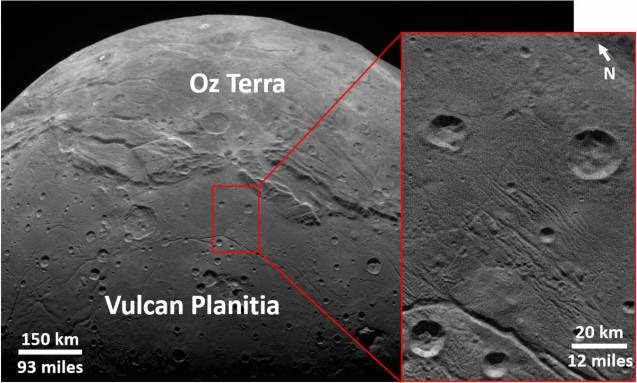New Horizons Data Hints There Are Few Small Kuiper Belt Bodies
Researchers at the Southwest Research Institute have been pouring over data that NASA's New Horizons probe recorded in 2015 on its flyby of Pluto and Charon. One of the surprising things they have discovered in their study is that there are few impact craters on Pluto's largest moon, Charon, indicating there are few small impactors in the Kuiper Belt.
Specifically, the researchers noted a lack of impact craters on Charon that would be caused by objects in the 300-feet to 1 mile in diameter range. The data indicates impactors in that size range are rare in the Kuiper Belt. Craters on the surface of objects in the solar system are used to record the impact of smaller bodies.
That data gives scientists hints about the history of the objects they are studying. New Horizons shared a wealth of data on Pluto and its satellites. Among the things that the flyby revealed are mountains on Pluto and Charon that reach as high as 13,000 feet.

Scientists are focusing on crater study on Charon because it lives in relative geological stasis. Pluto, on the other hand, is geologically active and those geological forces have removed some of its impact crater evidence.
The team studying the data also notes that New Horizons data on the Kuiper Belt object dubbed Ultima Thule also shows evidence of a few small impact craters. The team notes that the lack of small objects is a surprise and changes the view of the Kuiper Belt.
